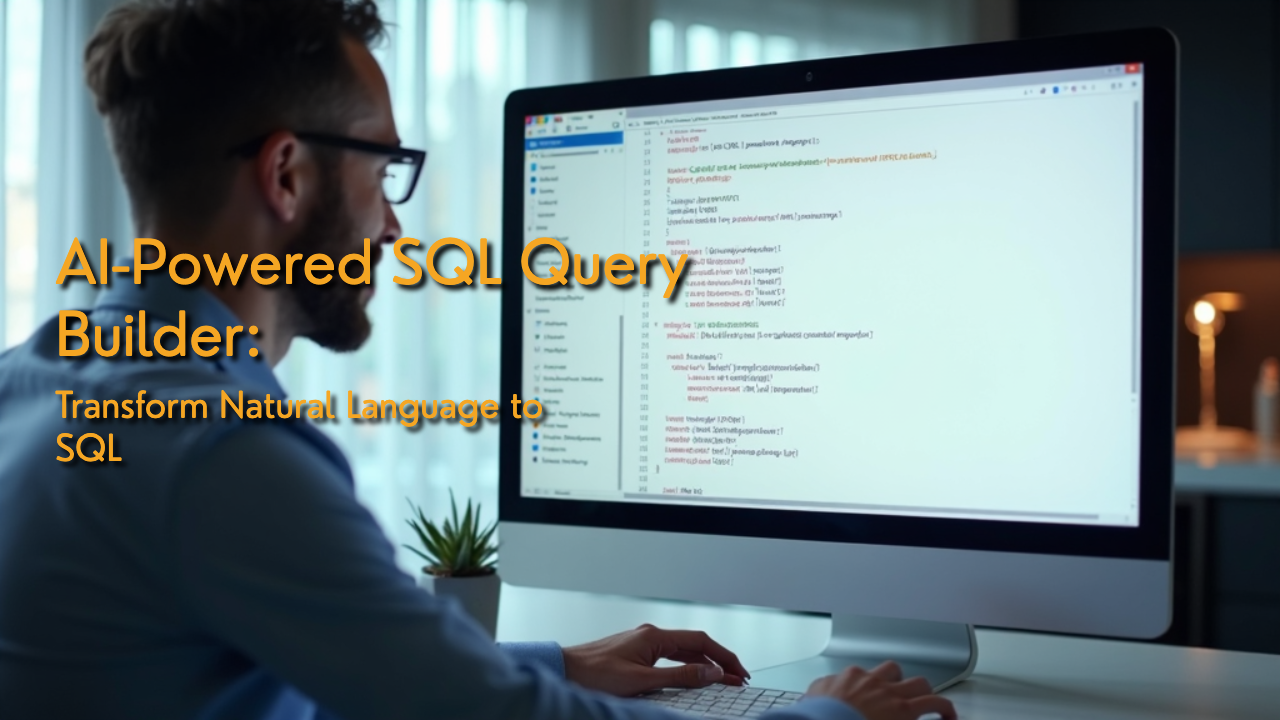In today's data-driven world, the ability to efficiently query databases has become a crucial skill for developers, analysts, and data scientists. Traditional SQL query writing can be time-consuming and error-prone, especially when dealing with complex database schemas or multiple table joins. Enter AI-powered query builders – a revolutionary approach that combines natural language processing (NLP) with database expertise to transform how we interact with data.
The dwagentai.com Query Builder represents a significant leap forward in database interaction technology, allowing users to express their data requirements in plain English while automatically generating optimized SQL queries. This innovation bridges the gap between human intent and database operations, making data access more intuitive and efficient than ever before.
The Evolution of Database Querying
To appreciate the revolutionary nature of AI-powered query builders, it's essential to understand the evolution of database querying:
1970s-1980s
Raw SQL queries and command-line interfaces dominated database interactions
1990s-2000s
Visual query builders and ORMs emerged to simplify database access
2020s-Present
AI-powered natural language query systems revolutionize data access
Key Features of Modern AI Query Builders
Natural Language Processing
- Context-aware query understanding
- Support for complex business logic
- Automatic entity recognition
- Semantic analysis capabilities
Query Optimization
- Automatic index utilization
- Join optimization strategies
- Performance monitoring
- Query execution planning
Advanced Use Cases and Examples
1. Complex Aggregations
Natural Language:
"Show me monthly sales trends by product category for the last year, including year-over-year growth"
Generated SQL:
WITH monthly_sales AS (
SELECT
DATE_TRUNC('month', order_date) as sale_month,
pc.category_name,
SUM(oi.quantity * oi.unit_price) as total_sales
FROM order_items oi
JOIN products p ON oi.product_id = p.product_id
JOIN product_categories pc ON p.category_id = pc.category_id
WHERE order_date >= DATE_TRUNC('month', CURRENT_DATE - INTERVAL '1 year')
GROUP BY 1, 2
)
SELECT
sale_month,
category_name,
total_sales,
LAG(total_sales, 12) OVER (
PARTITION BY category_name
ORDER BY sale_month
) as last_year_sales,
ROUND(((total_sales / NULLIF(LAG(total_sales, 12) OVER (
PARTITION BY category_name
ORDER BY sale_month
), 0) - 1) * 100), 2) as yoy_growth
FROM monthly_sales
ORDER BY sale_month DESC, total_sales DESC;
2. Customer Segmentation
Natural Language:
"Segment customers into high, medium, and low value based on their lifetime purchase value and frequency of orders"
Generated SQL:
WITH customer_metrics AS (
SELECT
customer_id,
COUNT(order_id) as order_count,
SUM(total_amount) as lifetime_value,
AVG(total_amount) as avg_order_value
FROM orders
GROUP BY customer_id
),
customer_segments AS (
SELECT
*,
NTILE(3) OVER (ORDER BY lifetime_value) as value_segment,
NTILE(3) OVER (ORDER BY order_count) as frequency_segment
FROM customer_metrics
)
SELECT
customer_id,
CASE
WHEN value_segment = 3 AND frequency_segment >= 2 THEN 'High Value'
WHEN value_segment = 1 AND frequency_segment <= 2 THEN 'Low Value'
ELSE 'Medium Value'
END as customer_segment,
lifetime_value,
order_count,
avg_order_value
FROM customer_segments;
Technical Architecture
1. Natural Language Understanding
Our system employs advanced NLP models to:
- Parse and understand natural language queries
- Extract key entities and relationships
- Identify query intent and requirements
- Handle complex business logic expressions
2. Query Optimization Engine
The optimization engine considers multiple factors:
- Available indexes and their selectivity
- Table statistics and cardinality estimates
- Join order optimization
- Subquery optimization and materialization
Performance Metrics and Benchmarks
| Metric | Traditional Approach | AI Query Builder | Improvement |
|---|---|---|---|
| Query Writing Time | 15-30 minutes | 30-60 seconds | 95% faster |
| Error Rate | 12% | <1% | 92% reduction |
Future Developments
The future of AI-powered query building looks promising, with several exciting developments on the horizon:
- Integration with large language models for even more natural interactions
- Predictive query suggestions based on user behavior patterns
- Automated query optimization recommendations
- Cross-database query translation capabilities
- Real-time collaboration features for team environments
Ready to Transform Your Database Experience?
Join thousands of developers and analysts who are already using dwagentai.com to simplify their database interactions.
Try It Free
